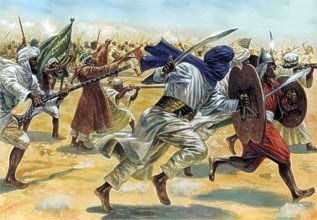ATOMIC STRUCTURE : easiest conceptual Video lectures
An atom is the smallest constituent unit of ordinary matter that has the properties of a chemical element
- Every atom is composed of a nucleus and one or more electrons bound to the nucleus. The nucleus is made of one or more protons and typically a similar number of neutrons (none in hydrogen-1). Protons and neutrons are called nucleons
- Over 99.94% of the atom's mass is in the nucleus
- If the number of protons and electrons are equal, that atom is electrically neutral. If an atom has more or less electrons than protons, then it has an overall negative or positive charge, respectively, and it is called an ion.
- protons are binded like a glue by neutrons by strong nuclear force otherwise the proton would have been attracted by electrons.
- Protons = +ve charged
- electrons = -ve charged
- neutron = 0 neutral
- the property of atom is judged by its atomic number or no of protons in an atom. no two atoms of different elements have same number of protons.
- Not all the matter of the universe is composed of atoms. Dark matter comprises more of the Universe than matter, and is composed not of atoms, but of particles of a currently unknown type
- Atomic mass is average of isotopes of an element.
HISTORY TIMELINE OF ATOMIC STRUCTURE :
Beginning of the 20th century:
- (1) atoms were electrically neutral - equal amounts of + and - charge
- (2) the negative charge is associated with cathode rays (electrons) particles having very small mass
- (3) atoms are stable
J. J. Thomson (1900)
- discovered the electron - cathode rays
- plum-pudding model - electrons and protons evenly spread throughout the atom (diameter = 10-10meters)
Max Planck (1900)
- blackbody radiation
- ultraviolet catastrophe
- E = hf where f = c/λ
Brownian Motion (1827)
- discovered initially by Scottish botanist, Robert Brown, when he witnessed pollen grains "jiggling" when examined under a microscope - later he saw the same agitated behavior with dust particles and grains of soot
- "Brownian Motion" is now known to be the result of the collisions between neighboring atoms/molecules (Einstein - 1905)
Rutherford's gold foil experiment (1909) with Geiger and Marsden (repeated with carbon and aluminum)
- 1 out of every 8000 alpha particles scattered through an angle > 90°
- discovered a small positively charged nucleus (diameter ≤ 10-14 meters)
- the value of the charge needed from the scattering data would equate to the magnitude of the charge held in the nucleus - which would dictate the number of electrons surrounding the nucleus which closely matched the atomic number in Mendeleev's periodic table (1869)
Bohr model (1913) how were these electrons arranged?
- steady orbitals - deBroglie wavelengths
- energy levels - light emission, light absorption - excitation and de-excitation
- spectral lines
Franck/Hertz (1914) experimentally verified discrete energy levels
- bombarded room temperature mercury vapor with electrons of specific KE
- absorption peak at 4.9 eV which was then shown to represent the energy of the 254 nm wavelength in mercury's emission spectrum
James Chadwich (1932)
- discovered the neutron
Werner Heisenburg (1935)
- first proposed the neutron-proton theory of nuclear structure
First, second and third video contain A LOOK INSIDE AN ATOM
4th video contain ISOTOPES description
5th video contains concept of , MASS NUMBER AND ATOMIC MASS DIFFERENCE
SOURCE =
1. Howstuff works
2. wikipedia
3. www.barcodesinc.com
4. playit.pk




Comments
Post a Comment